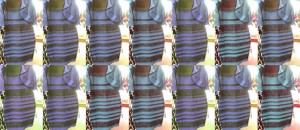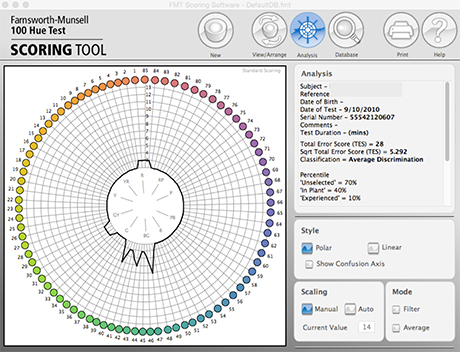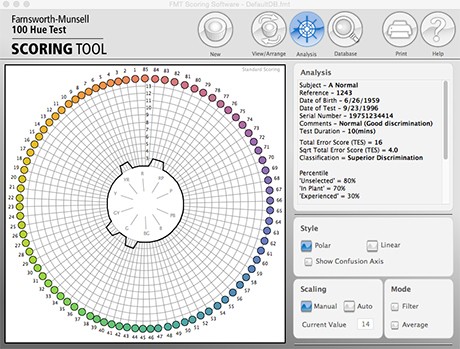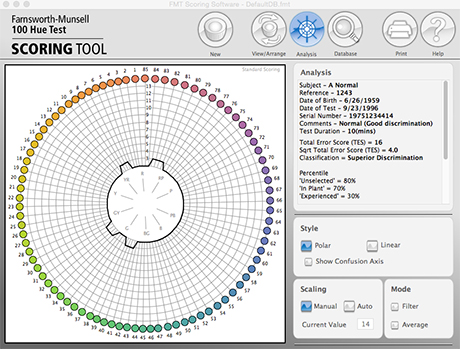
We imagine everyone feels ready to move on from the topic of #thedress, but when you live in the world of color, is it hard to stop finding a reason to bring it up again. We recently came across an article on Bustle, which got the conversation started back up.
The article asks the question: Can the Farnsworth Munsell 100 Hue Test Help Us Understand The Dress?
To answer that question, it is most important to recognize that the test doesn’t so much help us understand the dress, but more the discrepancies in opinions on the color of the dress and in turn, the differences in the way in which humans see color and where their individual color weaknesses may lie.
Why Do Humans See Color Differently?
This is where science comes in. The human eye is an organic structure that filters out short, long and medium wave lengths. These wavelengths correspond to various colors and this filtering system is what generates our individual color vision. Individual being the key term here. Neuroscientist Jay Neitz does a great job in the article on Wired, of explaining that an individual will throw away information and that other factors, like the background color and lighting can also effect what an individual will perceive. Another article on DOGO News shows examples of the same color on different backgrounds and the importance of looking at color independently of these factors. This is where color theory steps in.
Now that you understand the science and the reason why some humans will see white and gold and others will see blue and black, let’s get back to The Bustle article. We are most interested in Lucia being “overwhelmingly curious about whether that difference in processing correlates with forms of color vision deficiency.”
The short answer is yes. Going back to the idea of individual vision, if a human has weaknesses in certain areas, they may be more inclined to see the image as white and gold or as blue and black.
The Hue Test
Since color deficiency plays such a critical role in how an individual will see color, analog vision tests are the most effective way to determine one’s ability to communicate color subtleties.
Standards have been developed for how the hue test is administered to insure that results are accurate. In addition to having a controlled lighting environment, there is a time limit of approximately 5 minutes per tray. By encouraging the person being tested to keep moving along, it eliminates overthinking. If someone is struggling with a specific section, chances are that is an area of weakness.



It is also important to keep in mind that the online version of the test is meant to be an educational tool to show how the analog test works. In the analog test, users scores would range between 0 and 250 with 0 being the best score.
What Has The Dress Debate Taught You?
It has certainly be intriguing to see The Dress debate unfold and so many have jumped into the conversation – we love that it has sparked interest in color.
And if you haven’t had enough, check out Brane Games fun video that helps you, “warm-up your brain” with some challenging perception questions before you determine the color of The Dress.
This got us thinking, will a brain warm-up help you score better on the hue test? Well let’s save that one for an more in-depth scientific study.
What have you learned from #thedress debate? We would love to hear about it in the comments below.



Leave a Reply